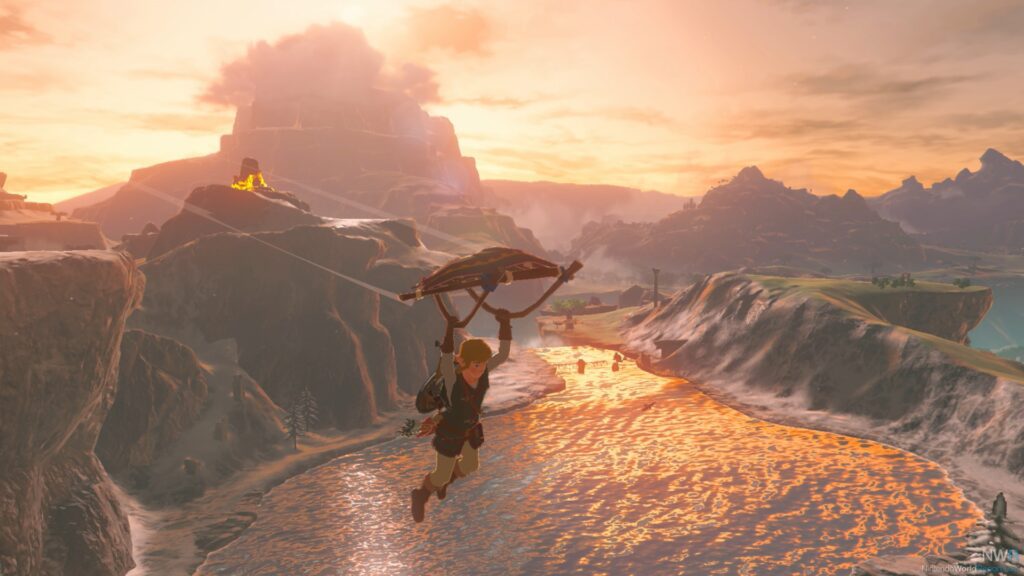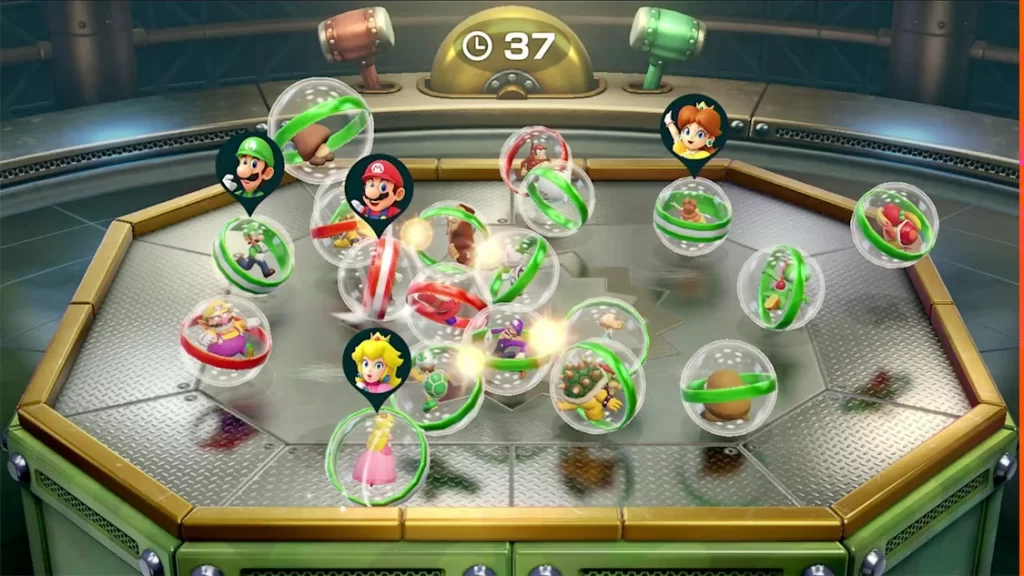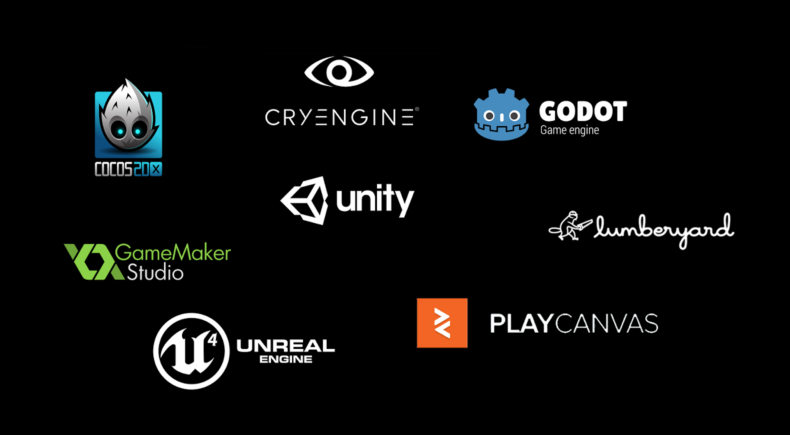Unless you have lived the past 35 years under a rock, chances are you have heard something about Nintendo.
According to Statista, in 2021, this company was the leading video game publisher in Japan with a whopping market share of almost 33%, surpassing Capcom (10.92%), The Pokémon Company (10.79%) and Konami (6.46%) combined.
A massive success in the gaming and console markets, Nintendo has been one of the average gamer’s favorite studios for decades. It boasts an impressive variety of critically acclaimed franchises under its belt, such as Mario, Pokémon, The Legend of Zelda, Donkey Kong, and Splatoon to name a few, satisfying the demands of casual and hardcore gamers alike.
This success would of course raise some questions and one of the most asked among game developers is “What game engine does Nintendo use?”
In this post, we will dive deeper into this question, give you some reasons to create proprietary engines, and talk you through the cost of making one yourself. With this in mind, get your imaginary joystick and press start to get rolling!
Don’t miss: How to fix Unity games crashing
What game engine does Nintendo use for their games?
Unlike most solo and independent (indie) developers, Nintendo generally uses their own proprietary (or “in-house”) engines for game development – and there are many of them!
As they don’t intend to license their engines out to other game development studios and they don’t publicize their names, this information ends up being little known by the average consumer. Licensing an internal engine to third-party developers would also create the need to document and support the tool, incurring additional costs that may not be worth it in the long run.

Furthermore, some of these game engines aren’t built for mass production. Take “The Legend of Zelda: Breath of the Wild” for instance. Nintendo opted for a custom game engine designed specifically for that game.
This way, programmers at Nintendo had complete control over how everything worked, allowing them to squeeze every drop of potential out of it to bring Hyrule’s vast and beautiful world to life. It’s a trade-off, as a custom engine might make this Zelda title a unique masterpiece, but it also means they’re starting from scratch for the next game.
Having said that, Nintendo will, on occasion, explore engines such as Unity and Unreal to develop prototypes and games of smaller scopes. For example: some Pokémon installments, specifically mobile’s “GO!” and “Unite”, and Nintendo Switch’s “Shining Pearl” and “Brilliant Diamond,” were created in Unity, whereas “Yoshi’s Crafted World” was built in Unreal Engine 4.
There is, however, an exception: NintendoWare Bezel Engine, a custom middleware solution used in many popular titles, such as “Tetris 99,” “Super Mario Party,” and “WarioWare: Get It Together!”
NintendoWare Bezel Engine: a curious exception
While Nintendo primarily uses its in-house engines for its first-party titles, the Bezel game engine, presented to the public at the 2018 Game Creator’s Conference, offers a unique opportunity for third-party developers to leverage a robust and well-supported engine specifically tailored for the Nintendo Switch and other platforms.
Nintendo’s Bezel boasts a range of features that cater to pretty much every aspect of game development. It includes a built-in shader system incorporating physically based rendering (PBR) for stunning visuals, along with post-processing effects that enhance the final image, which is what the players see.
It comes with a rock-solid 3D physics engine, powered by NVIDIA’s PhysX technology, as well as a 2D physics engine, utilizing either Box2D or LiquidFun depending on the project’s needs. These engines calculate all the collisions, light bounces, and whatever else the game needs to run, enabling realistic and engaging interactions with games.

Bezel also features a scripting system based on the simple (and remarkable) Lua language, complete with a dedicated debugger for streamlining development. Furthermore, Nintendo’s engine facilitates network-based gameplay through the company’s own peer-to-peer Pia system or the NEX network.
It also seamlessly integrates with unique Nintendo Switch features such as the IR Motion Camera, letting developers leverage these hardware capabilities for even more immersive and innovative gameplay.
If that wasn’t enough, Bezel’s extensibility and modular design allow developers to integrate external libraries, whether they’re open source, proprietary, or commercial. This modularity allows developers to tailor the engine to their specific needs, creating a highly adaptable development environment.
Why make an in-house engine?
One of the main reasons for creating a proprietary game engine is to avoid paying royalties and/or licensing costs they would otherwise incur.
Another strong point in their favor is that developing an in-house game engine allows for deep, customized optimizations to be made while also granting full access to the development team. With those perks in mind, artists and game creators can push the boundaries on what we know is possible.
Very well-optimized game engines allow games to be run with better, more detailed graphics without affecting performance, which is ALWAYS a good thing if you take into account that 3 in 4 players feel that graphics play a part in their decision to buy a new game.
Furthermore, game engines that run optimally enable matches with insane player counts to happen with little to no issues – think of MAG (PS3), which could handle 256 players in a single multiplayer match simultaneously!

Proprietary engines tend to be a lot more specialized than their commercial alternatives since they don’t need to support a wide variety of games. Considering that most companies specialize in just a few genres, the creation of an in-house engine allows companies to add features as needed, quickening the development speed and enhancing platform customization.
One could also argue that a custom game engine can be used as a marketing tool and as a way to troubleshoot faster. Most commercial engines don’t allow developers to access their source code, so companies would have to sit and wait until the engine-makers fix the issue in case of a serious bug.
What’s the cost of making a game engine?
As outlined in our other article, developing an in-house engine can be either very expensive or very time-consuming. Or maybe both depending on your requirements, which differ from game to game!
Why so? Well, creating a proprietary game engine requires a deep understanding of the building blocks that make a game tick.

First, games need a way to take player input, including button presses and joystick movements on a controller to taps and swipes on a touchscreen into signals the game understands. Without this system, your game won’t be able to react to the player’s actions!
Then, come the visuals. A graphics engine is the heart and soul of a game’s visual presentation, responsible for rendering everything you see on screen. This involves handling 3D models, textures, lighting, animation, and so on. Building such a marvel of engineering from scratch means tackling all these areas yourself, which can quickly snowball into a time-consuming endeavor.
A game engine also needs a physics engine to simulate real-world (or fantastical) motion. This engine dictates how objects interact with each other, the way a character jumps, how a car handles on a road, or how a ragdoll collapses after meeting its demise. Without it, your game world will feel stiff and lifeless.
And there’s more: sound design is crucial for creating an immersive experience. So you’ll also need an audio system in your engine to handle everything from background music and sound effects to character voices and environmental soundscapes.
On top of that, if your game involves multiple players, you’ll need a robust and efficient networking system to allow for smooth communication and interaction between players across different devices or servers.
Long story short, experienced in game development or not, we wouldn’t recommend you to create a proprietary engine from the ground up unless you are a hobbyist or you’re interested in a career in creating and maintaining a game engine. Game creators who only want to focus on the actual making of the game should instead look for an out-of-the-box engine to work with.

Conclusion
Even though in-house game engines have their fair share of perks, this doesn’t mean that they are better than the ones available on the internet. Like all things in life, every tool has its purpose for existing and it’s no different when it comes to commercial engines.
Some games indeed require so many specific features that creating one from scratch ends up as the best solution, but this is often not the case – especially for those who are just starting out.
We understand, as game developers ourselves, that making games takes a lot of time and effort. As such, doing everything with care from the start is a must to avoid setbacks down the line. The best way to accomplish this is to work with qualified professionals who understand the ins and outs of game development.
At Main Leaf, we work on demand to bring fantastic games to life, and we would be pleased to do so for you! If you are interested, make sure to go to the top of this page and get in contact with us by requesting a free game quote today. We promise to get back to you as soon as we can!

